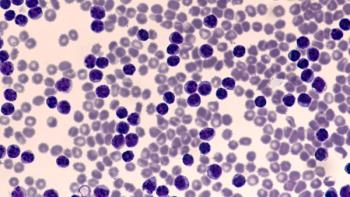
Cancer Vaccine Found Efficacious, Safe in Killing, Preventing Brain Cancer
The dual-action cell therapy is designed to eliminate established tumors, train the immune system to eradicate a primary tumor, and prevent recurrence.
Research investigating a new way to turn cancer cells into anti-cancer agents using an advanced mouse model targeting glioblastoma produced promising results, according to a study published in Science Translational Medicine. During the study, investigators assessed a vaccine designed to eliminate tumors and induce long-term immunity by training the immune system to identify and eradicate tumors and subsequently prevent recurrence.
“Our team has pursued a simple idea: to take cancer cells and transform them into cancer killers and vaccines,” said study co-author Khalid Shah, MS, PhD, director of the Center for Stem Cell and Translational Immunotherapy, vice chair of research in the
Although cancer vaccine research is an area of focus for many labs, the approach that Shah and his study co-authors took explores what is, as of yet, uncharted territory. Prior and concurrent cancer vaccine research efforts have used inactivated tumor cells; however, for this study, the team used living tumor cells possessing a unique feature. Tumors present in the brain are known to travel long distances to return to the site of their fellow tumor cells.
Tapping into this unique property, the investigators designed living tumor cells using the gene editing tool CRISPR-Cas9 and repurposed them to release a tumor cell killing agent. Further, the tumor cells were designed to express factors that make them easy for the immune system to effectively spot, tag, and remember. This, in turn, allows the immune system to develop a long-term anti-tumor response.
In different mice strains, investigators tested the CRISPR-Cas9-developed therapeutic tumor cells (ThTC) using bone marrow, liver, and thymus cells derived from humans, mimicking the human immune microenvironment. In case problems occurred, the investigators also built into the ThTC a 2-layered safety switch that could be activated to eradicate ThTCs as needed.
However, during the current study, the vaccine demonstrated efficacy and safety in the mice models, paving the way for future investigation. Further, the investigators noted that such research would be more easily facilitated due to their choice of model and use of human cells to ease the translation of their findings to the patient setting.
“Our goal is to take an innovative but translatable approach so that we can develop a therapeutic, cancer-killing vaccine that ultimately will have a lasting impact in medicine,” Shah said in the press release.
Based on their findings, the investigators explained that this therapeutic strategy was found to be applicable to a wide range of solid tumors beyond glioblastoma and that further investigations of potential applications are warranted.
Reference
Scientists Develop a Cancer Vaccine to Simultaneously Kill and Prevent Brain Cancer [Email]. Brigham and Women’s Hospital; January 3, 2023. Accessed January 3, 2023.
Newsletter
Stay informed on drug updates, treatment guidelines, and pharmacy practice trends—subscribe to Pharmacy Times for weekly clinical insights.




















































































































































































































